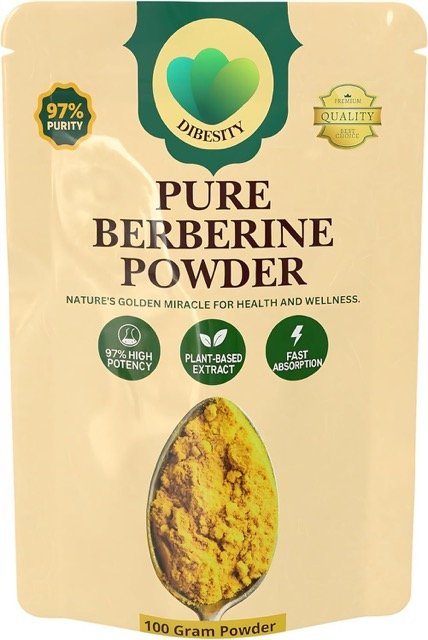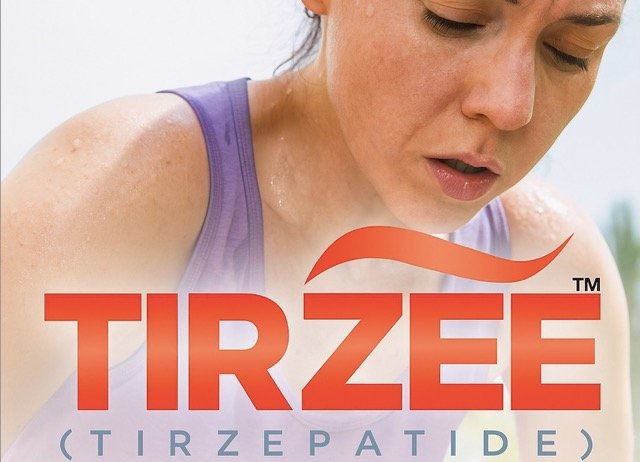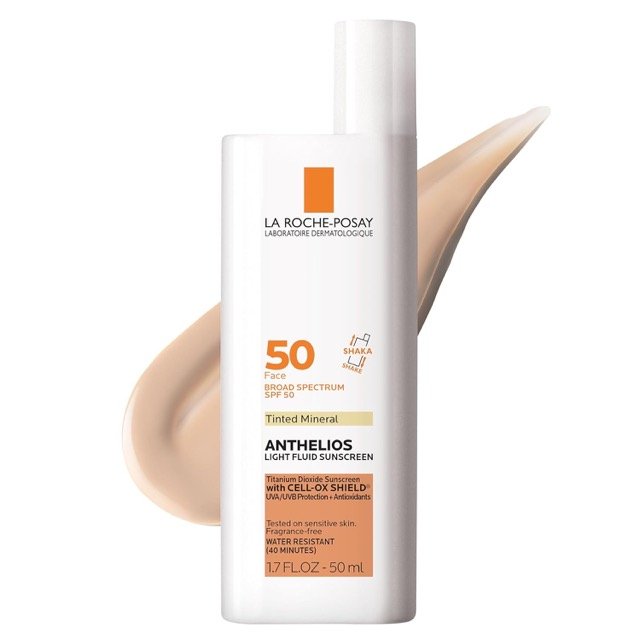A specific inhibitor of the MAO-B enzyme is safinamide (Xadago) (at doses not exceeding 100 mg per day). In conjunction with levodopa/carbidopa, it is used to treat Parkinson's disease patients.
Safinamide Uses:
-
Parkinson disease:
- It is used in conjunction with levodopa/carbidopa therapy to treat Parkinson's disease (PD) patients who are having "off" periods.
- Limitations of use: It has not been shown to be effective when used as monotherapy for the treatment of Parkinson's' disease.
Safinamide (Xadago) Dose in Adults
Safinamide (Xadago) Dose in the treatment of Parkinson disease:
- 50 mg orally once a day.
- The dose may be increased after 2 weeks to 100 mg once a day.
-
Discontinuation of therapy:
- Prior to treatment discontinuation, reduce the dose to 50 mg for one week.
Use in Children:
Not indicated.
Pregnancy Risk Factor C
- Animal reproduction studies have shown adverse pregnancy outcomes.
Use while breastfeeding
- If the medication is detected in breast milk is unknown.
- However, the manufacturer recommends that breastfeeding be stopped or the drug should not be used because of possible adverse drug reactions.
Dose in Kidney Disease:
There are no dosage adjustments provided in the manufacturer's labeling.
Dose in Liver disease:
- Mild impairment (Child-Pugh class A):
- No dosage adjustment is necessary.
- Moderate impairment (Child-Pugh class B):
- The maximum dose is 50 mg once a day.
- Severe impairment (Child-Pugh class C):
- Its use is contraindicated in these patients.
Common Side Effects of Safinamide (Xadago):
-
Neuromuscular & skeletal:
- Dyskinesia
Less Common Side Effects of Safinamide (Xadago):
-
Cardiovascular:
- Hypertension
- Orthostatic Hypotension
-
Central Nervous System:
- Falling
- Insomnia
- Anxiety
-
Gastrointestinal:
- Nausea
- Dyspepsia
-
Hepatic:
- Increased Serum ALT
- Increased Serum AST
-
Respiratory:
- Cough
Contraindications to Safinamide (Xadago):
- Hypersensitivity to safinamide and any other component of the formulation (eg, swelling of your tongue or oral mucosa or dyspnea).
- Severe liver impairment (Child Puugh class C);
- Using methylphenidate along with other CNS stimulants such amphétamine and its derivatives, or dextromethorphan;
- MAO inhibitors should not be used in conjunction with MAO inhibitors. MAO inhibitors are drugs that inhibit MAO enzyme's ability to produce a large amount of metabolites. These include:
- Linezolid
- Opioids (eg meperidine and methadone, propoxyphene or tramadol)
- Serotonin-norepinephrine Reuptake Inhibitors
- Tricyclic, tricyclic or tetracyclic antidepressants
- Cyclobenzaprine is also known as
- St John's Wort.
Canadian labeling: Additional contraindications not in US labeling
- Ocular (ophthalmic), disorders such as albinism, retinal damage, uveitis or inherited retinopathy can all lead to active retinopathy. This includes diabetic patients with progressive severe diabetic retinopathy.
Warnings and precautions
-
Depression in the CNS:
- CNS depression may result in mental or physical impairments. The drug should not be used for patients who are unable to perform tasks such as driving or operating heavy machinery.
- Patients have reported sleeping spells, sometimes without warning, during daily activities.
- These symptoms should be noted and monitored. Patients with severe symptoms should be asked not to continue treatment. Patients should not drive or engage in dangerous activities.
-
Dyskinesia
- The treatment may cause new-onset dyskinesia or worsening preexisting dyskinesia. The symptoms may improve with dosage reduction.
-
Hypertension
- Preexisting hypertension may be exacerbated by treatment. Patients should be closely monitored for signs of hypertension, especially new-onset hypertension.
- Important to remember that if the daily dose is more than 100 mg, the drug's specificity for MAO receptors is lost. This increases the risk of hypertension.
-
Disorders of impulse control:
- Compulsive behavior and loss of impulse control have been linked to the use of dopaminergic drugs. Patients may experience abnormal behaviors such as hypersexuality (increased sexual desire), pathological gambling and binge eating.
- Although the exact cause of these symptoms has not been proven, it is possible that patients with underlying behavioral issues may be more at risk.
- Treatment discontinuation or a decrease in dose may lead to behavioral compulsive symptoms that improve.
-
Serotonin syndrome
- Patients should be kept under close observation for any signs or symptoms that might point to serotonin syndrome, such as mental state changes (agitation and delirium), autonomic symptoms (sweating, labile pressure, and tachycardia), gastrointestinal symptoms (vomiting, diarrhoea), and neuromuscular symptoms (myoclonus, rigidity).
- Avoid taking fentanyl/buspirone, St. John's wort, triptans, TCAs, SSRIs, SNRIs, and other serotonergic medications at the same time. Moreover, linezolid, methylene blue, and patients taking MAO inhibitors should not be used.
- If you notice any of these symptoms, it is important to stop all treatment immediately.
-
Hepatic impairment
- Patients suffering from advanced liver disease should not take the drug. Patients with mild to moderate liver impairment should avoid the drug.
-
Ophthalmic disease
- Patients undergoing treatment should be monitored regularly for any changes in their eyesight. Patients with ophthalmic conditions such as:
- Patients who have a history retinal or macular damage.
- Uveitis
- Retinal conditions that are genetic
- Albinism
- Retinitis pigmentosa
- Any form of active retinopathy, or
- People with a history of hereditary retinal disease.
- Patients undergoing treatment should be monitored regularly for any changes in their eyesight. Patients with ophthalmic conditions such as:
-
Psychotic disorder
- Use of it may lead to psychotic episodes. Patients with preexisting major psychotic disorders may experience new-onset psychosis. If you notice symptoms such as psychosis, such as hallucinations or other psychotic behavior after treatment initiation, it is important to discontinue that treatment immediately.
Safinamide: Drug Interaction
|
Altretamine |
Could make monoamine oxidase inhibitors' orthostatic hypotensive action stronger. |
|
Amifampridine |
Agents With Seizure Threshold Lowering Potential may enhance the neuroexcitatory and/or seizure-potentiating effect of Amifampridine. |
|
Antiemetics (5HT3 Antagonists) |
May enhance the serotonergic effect of Serotonin Modulators. This could result in serotonin syndrome. |
|
Antipsychotic Agents |
Serotonin Modulators may enhance the adverse/toxic effect of Antipsychotic Agents. Specifically, serotonin modulators may enhance dopamine blockade, possibly increasing the risk for neuroleptic malignant syndrome. Antipsychotic Agents may enhance the serotonergic effect of Serotonin Modulators. This could result in serotonin syndrome. |
|
Beta2-Agonists |
Monoamine Oxidase Inhibitors may enhance the adverse/toxic effect of Beta2Agonists. |
|
Betahistine |
The serum concentration of betahistine may rise in response to monoamine oxidase inhibitors. |
|
Blood Glucose Lowering Agents |
Blood Glucose Lowering Agents' hypoglycemic effects may be strengthened by monoamine oxidase inhibitors. |
|
Brimonidine (Ophthalmic) |
Monoamine Oxidase Inhibitors might make brimonidine more harmful or poisonous (Ophthalmic). Brimonidine serum levels may rise in response to monoamine oxidase inhibitors (Ophthalmic). |
|
Brimonidine (Topical) |
Monoamine Oxidase Inhibitors might make brimonidine more harmful or poisonous (Topical). Brimonidine serum levels may rise in response to monoamine oxidase inhibitors (Topical). |
|
Cerebrolysin |
The negative or hazardous effects of monoamine oxidase inhibitors can be increased. |
|
Chlorphenesin Carbamate |
The negative or hazardous effects of monoamine oxidase inhibitors can be increased. |
|
Codeine |
Monoamine Oxidase Inhibitors might make codeine more harmful or poisonous. |
|
Dihydrocodeine |
The serotonergic effects of monoamine oxidase inhibitors may be enhanced. Serotonin syndrome might occur from this. |
|
Domperidone |
Monoamine Oxidase Inhibitors may intensify Domperidone's negative/toxic effects. Monoamine Oxidase Inhibitors may lessen Domperidone's therapeutic efficacy. Monoamine Oxidase Inhibitors' therapeutic effects may be lessened by dolperidone. |
|
Doxapram |
Doxapram's hypertensive effect may be strengthened by monoamine oxidase inhibitors. |
|
EPINEPHrine (Nasal) |
Epinephrine's ability to increase blood pressure may be enhanced by monoamine oxidase inhibitors (Nasal). |
|
Epinephrine (Racemic) |
Epinephrine's ability to increase blood pressure may be enhanced by monoamine oxidase inhibitors (Racemic). |
|
EPINEPHrine (Systemic) |
Epinephrine's ability to increase blood pressure may be enhanced by monoamine oxidase inhibitors (Systemic). |
|
Esketamine |
The hypertensive effects of monoamine oxidase inhibitors might be enhanced. |
|
Isoniazid |
Safinamide might make isoniazid's harmful or toxic effects worse. In particular, there is a higher risk of hypertension. |
|
Metaraminol |
Metaraminol's hypertensive effect may be strengthened by monoamine oxidase inhibitors. |
|
Metaxalone |
Could make serotonin modulators' serotonergic effects stronger. Serotonin syndrome might occur from this. |
|
Metoclopramide |
Serotonin modulators may intensify Metoclopramide's harmful or hazardous effects. These could appear as signs of neuroleptic malignant syndrome or serotonin syndrome. |
|
Norepinephrine |
Monoamine Oxidase Inhibitors may increase Norepinephrine's ability to raise blood pressure. |
|
Opioid Agonists |
Could make serotonin modulators' serotonergic effects stronger. Serotonin syndrome might occur from this. May lessen the therapeutic impact of anti-Parkinson drugs (Monoamine Oxidase Inhibitor). Pipamperone [INTtherapeutic ]'s impact may be reduced by anti-Parkinson drugs (monoamine oxidase inhibitors). |
|
Pipamperone [INT] |
The serotonergic effects of monoamine oxidase inhibitors may be enhanced. |
|
Risk Factor D (Consider therapy modification) |
|
|
Benzhydrocodone |
Serotonin syndrome might occur from this. Treatment: Patients on monoamine oxidase inhibitors (MAOIs) or those who have stopped taking MAOIs within 14 days shouldn't use benzhydrocodone. |
|
COMT Inhibitors |
The negative or hazardous effects of monoamine oxidase inhibitors can be increased. |
|
DOPamine |
DOPamine's ability to increase blood pressure may be enhanced by monoamine oxidase inhibitors. Treatment: Patients who are taking (or have recently taken) monoamine oxidase inhibitors should start dopamine at no more than one-tenth (1/10) of the typical dose. Keep an eye out for a heightened hypertensive reaction to dopamine. |
|
HYDROcodone |
Monoamine Oxidase Inhibitors may intensify Hydrocodone's harmful or hazardous effects. Management: When possible, look into alternatives to this pairing. |
|
Iohexol |
Agents With Seizure Threshold Lowering Potential may enhance the adverse/toxic effect of Iohexol. Specifically, the risk for seizures may be increased. Management: Discontinue agents that may lower the seizure threshold 48 hours prior to intrathecal use of iohexol. Wait at least 24 hours after the procedure to resume such agents. In nonelective procedures, consider use of prophylactic anticonvulsants. |
|
Iomeprol |
Agents With Seizure Threshold Lowering Potential may enhance the adverse/toxic effect of Iomeprol. Specifically, the risk for seizures may be increased. Management: Discontinue agents that may lower the seizure threshold 48 hours prior to intrathecal use of iomeprol. Wait at least 24 hours after the procedure to resume such agents. In nonelective procedures, consider use of prophylactic anticonvulsants. |
|
Iopamidol |
Agents With Seizure Threshold Lowering Potential may enhance the adverse/toxic effect of Iopamidol. Specifically, the risk for seizures may be increased. Management: Discontinue agents that may lower the seizure threshold 48 hours prior to intrathecal use of iopamidol. Wait at least 24 hours after the procedure to resume such agents. In nonelective procedures, consider use of prophylactic anticonvulsants. |
|
Levodopa-Containing Products |
The negative or hazardous effects of monoamine oxidase inhibitors can be increased. The emergence of hypertensive responses when levodopa is combined with nonselective MAOI is of special concern. Treatment: It is not advised to take levodopa and nonselective MAO inhibitors (MAOIs) together. |
|
Lithium |
Monoamine Oxidase Inhibitors might make lithium's harmful/toxic effects worse. Management: Use extreme caution when using this combo. When combination treatment is therapeutically necessary, keep a vigilant eye out for any symptoms of serotonin syndrome or toxicity. |
|
OxyCODONE |
The serotonergic effects of monoamine oxidase inhibitors may be enhanced. |
|
Pindolol |
Serotonin syndrome might occur from this. Management: When possible, look for alternatives. Use of oxycodone/naltrexone should be avoided during and for 14 days following monoamine oxidase inhibitor therapy. Certain oxycodone products' non-US labels suggest that such use is not advised. |
|
Reserpine |
Pindolol's hypotensive impact may be strengthened by monoamine oxidase inhibitors. Management: Pindolol's Canadian labelling warns against using a monoamine oxidase inhibitor at the same time. |
|
Serotonin Modulators |
The serotonergic impact of serotonin modulators may be enhanced by anti-Parkinson drugs (monoamine oxidase inhibitors). Serotonin syndrome might occur from this. If selegiline, rasagiline, or safinamide is taken with a serotonin modulator, keep an eye out for any signs and symptoms of serotonin syndrome or serotonin poisoning. It is not advised to use transdermal selegiline with serotonin modulators. Exceptions: Nicergoline. |
|
Risk Factor X (Avoid combination) |
|
|
Alcohol (Ethyl) |
The negative or hazardous effects of monoamine oxidase inhibitors can be increased. |
|
Alpha-/Beta-Agonists (Indirect-Acting) |
Alpha-/Beta-Agonists may have a stronger hypertensive effect when combined with monoamine oxidase inhibitors (Indirect-Acting). Although this is the expected mode of action for linezolid, management guidelines are different from those for other monoamine oxidase inhibitors. Details can be found in linezolid-specific monographs. |
|
Alpha1-Agonists |
Alpha1Agonists may have a stronger hypertensive effect when combined with monoamine oxidase inhibitors. Although this is the expected mode of action for linezolid, management guidelines are different from those for other monoamine oxidase inhibitors. |
|
Amphetamines |
Amphetamines' tendency to cause hypertension may be increased by monoamine oxidase inhibitors. However, unlike other monoamine oxidase inhibitors, linezolid and tedizolid have different management recommendations. For more information, consult the monographs for those agents. |
|
Apraclonidine: |
Monoamine Oxidase Inhibitors might make acrolonidine more harmful or poisonous. The concentration of araclonidine in the serum may rise after using monoamine oxidase inhibitors. |
|
AtoMOXetine |
Monoamine Oxidase Inhibitors may intensify AtoMOXetine's neurotoxic (central) impact. |
|
Atropine (Ophthalmic) |
Atropine's ability to increase blood pressure may be enhanced by monoamine oxidase inhibitors (Ophthalmic). |
|
Bezafibrate |
Monoamine Oxidase Inhibitors may intensify Bezafibrate's harmful or hazardous effects. |
|
Buprenorphine |
The negative or hazardous effects of monoamine oxidase inhibitors can be increased. |
|
BuPROPion |
BuPROPion's ability to raise blood pressure may be enhanced by monoamine oxidase inhibitors. |
|
BusPIRone |
The negative or hazardous effects of monoamine oxidase inhibitors can be increased. Increases in blood pressure have specifically been recorded. |
|
CarBAMazepine |
The negative or hazardous effects of monoamine oxidase inhibitors can be increased. Management: Avoid from using carbamazepine concurrently with monoamine oxidase inhibitor therapy or within 14 days of stopping it. |
|
Cyclobenzaprine |
The serotonergic effects of monoamine oxidase inhibitors may be enhanced.Serotonin syndrome might occur from this. |
|
Cyproheptadine |
Monoamine oxidase inhibitors may boost Cyproheptadine's anticholinergic effects. The serotonergic impact of monoamine oxidase inhibitors may be lessened by cyproheptadine. |
|
Dapoxetine |
Serotonin modulators' harmful or toxic effects could be exacerbated. |
|
Deutetrabenazine |
Monoamine Oxidase Inhibitors may make deutetrabenazine's harmful or hazardous effects worse. |
|
Dexmethylphenidate |
Dexmethylphenidate may have a stronger hypertensive effect when used with monoamine oxidase inhibitors. |
|
Dextromethorphan |
Monoamine oxidase inhibitors might improve dextromethorphan's serotonergic effects. It might result in serotonin syndrome. |
|
Diethylpropion |
Diethylpropion may have a stronger hypertensive effect when used with monoamine oxidase inhibitors. |
|
Diphenoxylate |
The hypertensive effects of monoamine oxidase inhibitors might be enhanced. |
|
EPINEPHrine (Oral Inhalation) |
Epinephrine's ability to increase blood pressure may be enhanced by monoamine oxidase inhibitors (Oral Inhalation). |
|
FentaNYL |
The serotonergic effects of monoamine oxidase inhibitors may be enhanced. Serotonin syndrome might occur from this. |
|
Guanethidine |
The negative or hazardous effects of monoamine oxidase inhibitors can be increased. |
|
Heroin |
Monoamine Oxidase Inhibitors might make heroin more harmful or poisonous. |
|
HYDROmorphone |
Monoamine Oxidase Inhibitors may intensify HYDROmorphone's harmful or hazardous effects. |
|
Indoramin |
Indoramin's hypotensive impact may be strengthened by monoamine oxidase inhibitors. |
|
Iobenguane Radiopharmaceutical Products |
Iobenguane radiopharmaceutical products' therapeutic effects may be reduced by monoamine oxidase inhibitors. Treatment: Before administering iobenguane, stop taking any medications that could impede or interfere with catecholamine transport or uptake for at least five biological half-lives. Don't give these medications. |
|
Isometheptene |
Monoamine Oxidase Inhibitors might make isotheptene more harmful or poisonous. |
|
Levomethadone |
The negative or hazardous effects of monoamine oxidase inhibitors can be increased. |
|
Levonordefrin |
Levonordefrin's ability to increase blood pressure may be enhanced by monoamine oxidase inhibitors. |
|
Linezolid |
Monoamine Oxidase Inhibitors may intensify Linezolid's negative/toxic effects. |
|
Meperidine |
Meperidine's serotonergic action may be enhanced by monoamine oxidase inhibitors. It might result in serotonin syndrome |
|
Meptazinol |
Monoamine Oxidase Inhibitors may intensify Meptazinol's harmful or hazardous effects. |
|
Mequitazine |
Mequitazine's anticholinergic effects may be enhanced by monoamine oxidase inhibitors |
|
Methyldopa |
Monoamine Oxidase Inhibitors may intensify Methyldopa's harmful or hazardous effects. |
|
Methylene Blue |
Methylene Blue may have a stronger serotonergic impact when taken with monoamine oxidase inhibitors. Serotonin syndrome might occur from this. |
|
Methylphenidate |
Methylphenidate's ability to raise blood pressure may be enhanced by monoamine oxidase inhibitors. |
|
Mianserin |
The neurotoxic effect of Mianserin may be increased by monoamine oxidase inhibitors. |
|
Mirtazapine |
Monoamine Oxidase Inhibitors may intensify Mirtazapine's neurotoxic (central) impact. While interactions between methylene blue and linezolid are anticipated, their usage is not advised in the same way as other monoamine oxidase inhibitors. For more information, consult the monographs for those agents. |
|
Moclobemide |
Monoamine Oxidase Inhibitors may intensify Moclobemide's harmful or hazardous effects. |
|
Monoamine Oxidase Inhibitors |
Certain monoamine oxidase inhibitors have the potential to increase their hypertensive effects. Other monoamine oxidase inhibitors' serotonergic effects may be enhanced by monoamine oxidase inhibitors. Serotonin syndrome might occur from this. |
|
Morphine (Systemic) |
Monoamine Oxidase Inhibitors might make morphine more harmful or poisonous (Systemic). |
|
Nefopam |
Monoamine Oxidase Inhibitors may intensify Nefopam's harmful or hazardous effects. |
|
Opium |
Monoamine Oxidase Inhibitors might make opium more harmful or poisonous. |
|
OxyMORphone |
The negative or hazardous effects of monoamine oxidase inhibitors can be increased. |
|
Pheniramine |
Monoamine oxidase inhibitors' anticholinergic effects might be strengthened. |
|
Pholcodine |
The serotonergic effects of monoamine oxidase inhibitors may be enhanced. Serotonin syndrome might occur from this. |
|
Pizotifen |
Monoamine Oxidase Inhibitors may strengthen Pizotifen's anticholinergic effects. |
|
Reboxetine |
Monoamine Oxidase Inhibitors may intensify Reboxetine's harmful or hazardous effects. |
|
Selective Serotonin Reuptake Inhibitors |
Selective Serotonin Reuptake Inhibitors' serotonergic effects may be enhanced by monoamine oxidase inhibitors. It might result in serotonin syndrome. Although this interaction between methylene blue and linezolid is anticipated, management guidelines for this drug are different from those for other monoamine oxidase inhibitors. For more information, consult the monographs for those agents. |
|
Serotonin 5-HT1D Receptor Agonists |
Serotonin 5-HT1D Receptor Agonists' metabolism may be slowed down by monoamine oxidase inhibitors. Management: Naratriptan, eletriptan, or frovatriptan may be suitable 5-HT1D agonists to use if MAO inhibitor medication is necessary. Eletriptan, Frovatriptan, and Naratriptan are exceptions. |
|
Serotonin Reuptake Inhibitor/Antagonists |
Serotonin Reuptake Inhibitor/Antagonists' harmful or toxic effects may be increased by monoamine oxidase inhibitors. While interactions between methylene blue and linezolid are anticipated, their usage is not advised in the same way as other monoamine oxidase inhibitors. For more information, consult the monographs for those agents. |
|
Serotonin/Norepinephrine Reuptake Inhibitors |
Serotonin/Norepinephrine Reuptake Inhibitors' serotonergic effects may be enhanced by monoamine oxidase inhibitors. It might result in serotonin syndrome. Although this interaction between methylene blue and linezolid is anticipated, management guidelines for this drug are different from those for other monoamine oxidase inhibitors. For more information, consult the monographs for those agents. |
|
Solriamfetol |
Solriamfetol's ability to raise blood pressure may be enhanced by monoamine oxidase inhibitors. |
|
SUFentanil |
The negative or hazardous effects of monoamine oxidase inhibitors can be increased. Particularly, there may be an elevated risk for serotonin syndrome or opioid toxicities (such as respiratory depression or coma). Management: Due to the risk of serotonin syndrome and/or severe CNS depression, fentanyl should not be administered in conjunction with monoamine oxidase (MAO) inhibitors (or within 14 days of discontinuing an MAO inhibitor). |
|
Tapentadol |
The negative or hazardous effects of monoamine oxidase inhibitors can be increased. In particular, norepinephrine's cumulative actions could have harmful cardiovascular repercussions. The serotonergic action of monoamine oxidase inhibitors may be enhanced by tapentadol. Serotonin syndrome might occur from this. |
|
Tetrabenazine |
The negative or hazardous effects of monoamine oxidase inhibitors can be increased. |
|
Tetrahydrozoline (Nasal) |
Monoamine Oxidase Inhibitors may increase Tetrahydrozoline's hypertensive impact (Nasal). |
|
Tricyclic Antidepressants |
Tricyclic antidepressants' serotonergic action may be strengthened by monoamine oxidase inhibitors. It might result in serotonin syndrome. Although this interaction between methylene blue and linezolid is anticipated, management guidelines for this drug are different from those for other monoamine oxidase inhibitors. For more information, consult the monographs for those agents. |
|
Tryptophan |
The negative or hazardous effects of monoamine oxidase inhibitors can be increased. |
|
Valbenazine |
The negative or hazardous effects of monoamine oxidase inhibitors can be increased. |
Monitoring parameters:
- Blood pressure;
- signs and symptoms of serotonin syndrome;
- visual changes.
How to administer Safinamide (Xadago)?
It can be administered without regard to meals at the same time of the day. It is administered in association with levodopa/carbidopa.
Mechanism of action of Safinamide (Xadago):
- It acts as an inhibitor of MAO-B enzyme.
- The brain will have higher levels of dopamine if the MAO-B enzyme is blocked.
- Dopamine's degradation is also inhibited by MAO enzymes.
- Although the exact mechanism behind Parkinson's disease symptoms is unknown, it is believed that an increase in brain dopamine levels may help to alleviate them.
Protein binding:
- About 88%
Metabolism:
- It is primarily degraded by non-microsomal enzymes (cytosolic amidases/MAO-A) to inactive metabolites.
- The total biotransformation is not greatly impacted by the enzymatic degradation caused by CYP3A4 and other CYP iso-enzymes.
Bioavailability:
- 95%
Half-life elimination:
- 20 to 26 hours
Time to peak:
- 2 to 3 hours
Excretion:
- Urine (76%, primarily in the form of inactive metabolites; about 5% is excreted as unchanged)
International Brand Names of Safinamide:
- Xadago
- Onstryv
Safinamide Brand Names in Pakistan:
No Brands Available in Pakistan.









